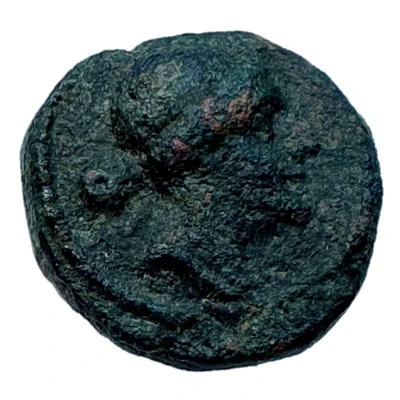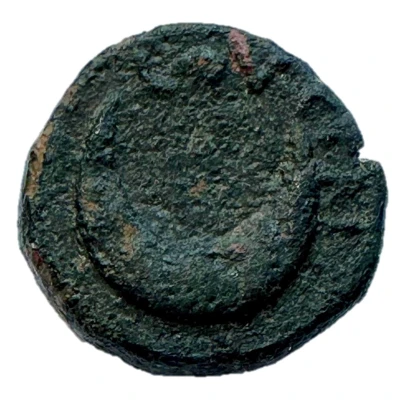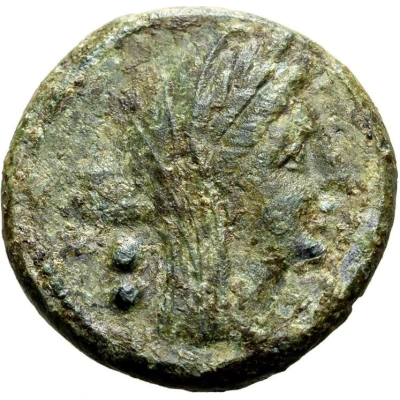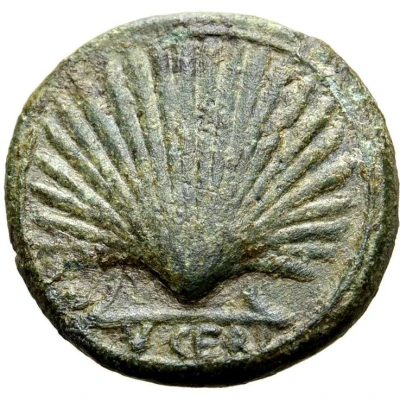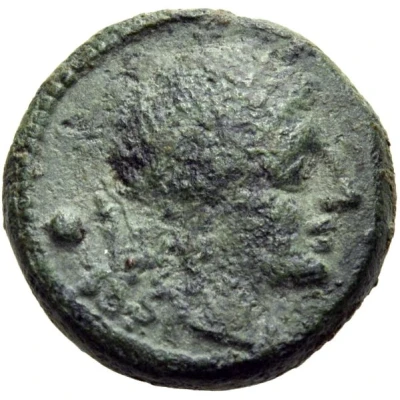
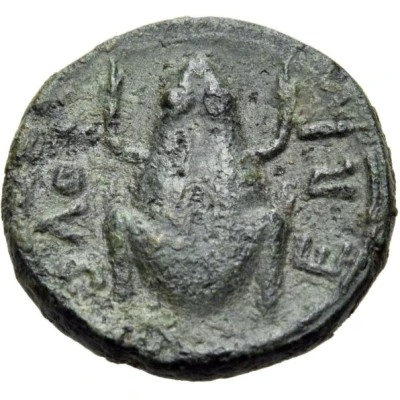

© Nomos AG
Uncia 211 BC - 200 BC
| Bronze | 3.43 g | 15 mm |
| Issuer | Luceria (Apulia) |
|---|---|
| Period | Second Punic War (218 BC - 203 BC) |
| Type | Standard circulation coin |
| Years | 211 BC - 200 BC |
| Value | Uncia (1⁄12) |
| Currency | Nummus (circa 218-201 BC) |
| Composition | Bronze |
| Weight | 3.43 g |
| Diameter | 15 mm |
| Shape | Round (irregular) |
| Technique | Hammered |
| Orientation | Variable alignment ↺ |
| Demonetized | Yes |
| Updated | 2024-10-09 |
| Numista | N#424622 |
|---|---|
| Rarity index | 100% |
Reverse
Frog seen from above.
Script: Greek
Lettering: LOVC ERI
Interesting fact
The Uncia coin was used as a form of currency in ancient Rome and its territories, and it was equivalent to 1/12 of a Roman pound. The coin was made of bronze and had a distinctive design, featuring the image of a bull on one side and a mythological scene on the other. The Uncia coin was first introduced during the reign of King Tarquinius Priscus in the 7th century BC and was used until the 2nd century AD. It's interesting to note that the Uncia coin was not only used as a form of currency but also had cultural and religious significance. The bull image on the coin was associated with the goddess Juno, who was revered as the protector of the state and the symbol of fertility and prosperity. The Uncia coin was also used in religious rituals and ceremonies, and it was believed to have magical powers that could bring good fortune and prosperity to those who possessed it. Overall, the Uncia coin is a fascinating piece of history that provides insight into the culture, economy, and religious beliefs of ancient Rome and its territories.
Price
| Date | Mintage | VG | F | VF | XF | AU | UNC |
|---|---|---|---|---|---|---|---|
| ND (211 BC - 200 BC) | - | - | - | - | - | - |
Values in the table are based on evaluations by sales realized on Internet platforms. They serve as an indication only for Uncia (211 BC - 200 BC) coin.
